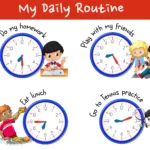Okay, let's be real. Tantrums. Just the word can make any mom cringe, right? As a pediatrician and a mom to two amazing girls, ages 8 and 4, I totally get it. We all know tantrums are a normal part of growing up, but sometimes it feels like they can turn our day upside down. It’s like, one minute everything is fine, and the next, BAM! Emotions explode, and suddenly we're in the middle of a storm. But guess what? There are things we can do to actually help prevent those storms from brewing in the first place. Think of it as a little bit of weather forecasting for our kiddos' emotions!
- The Magic of a Routine
- Setting the Stage with Clear Expectations
- Sleep and Food: The Unsung Heroes
- Letting Them Choose: The Power of Options
- Spotting and Steering Clear of Triggers
- The Power of Praise: Catching Them Being Good
- When the Storm Hits: Responding to Tantrums
- One Size Doesn’t Fit All: Adapting to Different Ages
- Wrapping Up: You’ve Got This, Mama!
The Magic of a Routine
Seriously, you would be amazed at how much a good routine can change things. For my girls, having a predictable day makes a HUGE difference. Kids thrive on knowing what’s coming next. It gives them a sense of security and, honestly, it just makes life smoother for everyone. When things are predictable, they're less likely to feel anxious or overwhelmed, and that’s a big win in the tantrum-prevention department. A regular routine is like a little anchor in their day, helping them regulate their emotions and even encouraging healthy habits like good sleep and regular meals.
I've seen it firsthand with my own girls. On days when we stick to our routine, things just flow better. Mornings are less rushed, mealtimes are calmer, and bedtime isn't a battle. It’s not always perfect, life happens, but aiming for consistency is key. And guess what? Studies actually back this up! Consistent routines are linked to better sleep, improved social skills, and fewer power struggles. It's all connected to their overall development.
And here’s a little bonus – routines can also include playtime! Play is not just fun; it’s actually crucial for preventing tantrums. When kids play, they're learning to manage their emotions, express themselves, and deal with frustration in a safe way. Think of it as emotional practice! Making time for both structured activities and free play gives them an outlet for their energy and feelings, which really helps to keep those big emotions from turning into tantrums.
Making Routines Work for You
- Set up a daily schedule: Try to have regular times for waking up, meals, naps or quiet time, playtime, and bedtime.
- Talk about the plan: Make sure to explain the routine to your child so they know what to expect.
- Get visual: For younger kids, picture charts or visual schedules can be super helpful. My youngest loves looking at her picture schedule in the morning!
- Be flexible but consistent: Life happens, so don't beat yourself up if you need to adjust sometimes. The goal is to keep the overall structure consistent as much as possible.
Setting the Stage with Clear Expectations
Okay, mamas, clear expectations are like your secret weapon! When kids know the rules and boundaries, they are way more likely to cooperate. Think about it – if you know what’s expected of you, it’s easier to meet those expectations, right? It’s the same for our little ones. Clear expectations reduce confusion and those power struggles that can lead to meltdowns. It also helps them learn about responsibility, which is a great life skill!
Now, it’s super important to make sure those expectations are age-appropriate. My 4-year-old is still learning so much about the world, and her understanding of rules is different from my 8-year-old. We can't expect toddlers to grasp complex rules like older kids. Setting expectations that are too high can lead to frustration and tantrums because they just feel overwhelmed or like they can’t possibly succeed. We want to set them up for success, not frustration!
And here’s something else that’s really important: helping our kids understand their feelings. Teaching them about emotions – what they are, how to name them – that's called emotional literacy. It’s a game-changer! When kids can recognize and talk about their feelings, they’re less likely to act out with tantrums. Giving them the words to express themselves empowers them to communicate their needs and navigate tough situations in a healthier way. It’s like giving them the tools to manage their own emotional weather!
How to Set Clear Expectations
- Use simple language: Talk to your child in a way they understand, depending on their age.
- Be specific: Clearly explain what behaviors are okay and not okay. “We use gentle hands with our toys” is clearer than “Be good.”
- Give clear instructions: Keep instructions short and easy to follow. One or two steps at a time works best for little ones.
- Be consistent: Try to enforce rules consistently, and avoid making exceptions too often. Consistency helps kids understand the boundaries.
Sleep and Food: The Unsung Heroes
Okay, mamas, let's talk about the basics: sleep and food. These are HUGE when it comes to our kids' moods and behavior. Think about how you feel when you’re tired or hungry – probably not your best self, right? It's the same for our kids, only amplified! When they are tired or hungry, their little emotional fuses are just shorter. They are more likely to get irritable and have a harder time managing big emotions. It’s just biology!
And it's not just about enough food, but also what kind of food. Studies have actually shown a link between healthy eating and better emotional regulation in kids. Who knew, right? Providing nutritious meals and snacks really supports their ability to handle emotions and can definitely help reduce tantrums. Think of it as fueling their emotional resilience from the inside out.
Tips for Sleep and Nutrition Power
- Prioritize sleep: Make sure your child is getting enough sleep for their age. Every child is different, but aim for those age-appropriate sleep guidelines.
- Bedtime routine is your friend: A consistent bedtime routine signals to their bodies that it’s time to wind down. Think bath, book, cuddles – whatever works for your family.
- Healthy meals and snacks: Offer a balanced diet with lots of fruits, veggies, and whole grains. Think colorful plates!
- Limit the sugar rush (and crash): Try to minimize sugary foods and processed carbs. They can cause blood sugar spikes and dips that can really mess with moods.
Letting Them Choose: The Power of Options
Here's a cool trick: give your kids choices! It’s such a simple thing, but it can make a big difference in preventing tantrums. Giving choices, within reasonable limits of course, helps kids feel like they have some control over their little world. When they feel empowered to make decisions, they are less likely to feel frustrated and powerless, which can often trigger tantrums. Plus, offering choices is a sneaky way to help them learn to take responsibility and even start developing problem-solving skills. It’s a win-win!
Offering Choices That Work
- Keep it simple: Offer easy choices like, “Do you want to wear your blue shirt or your green shirt?” or “Snack time! Apples or bananas?”
- Limit the options: Too many choices can be overwhelming, especially for younger kids. Stick to two or three options.
- Make sure you're okay with all choices: Only offer choices you are happy with. No offering candy if you're trying to avoid sugar!
- Respect their decision: Once they choose, stick with it! Even if they change their mind later, try to gently remind them of their initial choice.
- Use choices throughout the day: Look for opportunities to offer choices in different situations – getting dressed, choosing activities, even bedtime routines.
Spotting and Steering Clear of Triggers
Okay, detective moms, it's time to put on our thinking caps and become trigger detectives! Every child is different, and they all have their own unique tantrum triggers. Triggers can be anything that sets off a tantrum. Sometimes they are obvious, like being told “no” to something they really want. Other times, they can be more subtle, like being rushed, feeling overly tired, or those tricky transitions between activities. Even too much screen time can be a sneaky trigger! Studies have shown that too much screen time can actually make it harder for kids to manage their emotions, making them more prone to tantrums.
The key is to figure out what your child's triggers are so you can try to avoid them or at least minimize them when possible. Think of it as knowing the weather patterns in your house – if you know a storm is brewing when certain things happen, you can take steps to prepare or even change course!
Becoming a Trigger Detective
- Keep a little tantrum diary: Jot down when tantrums happen, the time of day, where you were, who was there, and what might have triggered it.
- Look for patterns: After a while, you might start to see patterns. Does your child always have a harder time in the late afternoon? Are transitions between activities particularly tough?
- Plan ahead to avoid triggers: Once you know the triggers, try to plan your day to avoid them or minimize exposure. If transitions are hard, give warnings before switching activities.
- Prepare for transitions: Give your child a heads-up before moving from one activity to another. “In five minutes, we're going to clean up and get ready for lunch.” Warnings can make a big difference!
The Power of Praise: Catching Them Being Good
Let's talk about sunshine! Positive reinforcement is like sunshine for good behavior. It's all about focusing on what your child is doing right and giving them praise and encouragement. When we praise and reward positive behavior, kids are way more likely to repeat those behaviors. It’s human nature! It’s also important to remember that our own calm demeanor as parents is incredibly powerful. When we stay calm, we are modeling emotional regulation for our kids. We are showing them that it’s possible to manage big emotions without losing it. Our calmness can actually help de-escalate a potential tantrum situation. Think of yourself as the calm in their emotional storm!
Using Positive Reinforcement Like a Pro
- Give genuine and specific praise: Instead of just saying “Good job,” try “I really like how you shared your toys with your sister. That was very kind.” Specific praise is more meaningful.
- Offer small rewards: Little rewards can be great motivators. Stickers, extra playtime, or choosing a special activity can reinforce good behavior.
- Try a sticker chart: For some kids, visual aids like sticker charts or token boards can be really helpful to track their progress and see their successes.
- Focus on the positive: Try to catch them being good and reward that, rather than only reacting to negative behavior. It shifts the focus to the positive!
When the Storm Hits: Responding to Tantrums
Okay, mamas, even with all our best efforts, tantrums still happen. It’s just part of the parenting journey. When they do, it's all about how we respond. Staying calm (easier said than done, I know!), and responding effectively can make a huge difference in how long the tantrum lasts and what your child learns from it. Think of it as navigating the storm once it arrives. We can’t always prevent the rain, but we can learn to sail through it!
Active listening, validation, and setting limits are your go-to strategies in the moment. It's about understanding what's going on for your child, acknowledging their feelings, and still holding onto those boundaries.
- Active listening: Really pay attention to your child – what they are saying, how they are saying it, their body language. Show them you are trying to understand.
- Validation: Let them know you understand their feelings, even if you don't agree with their behavior. “I see you're really upset that we have to leave the park.” Validation doesn't mean giving in; it means acknowledging their emotion.
- Setting limits: Clearly and calmly restate the rules and expectations. “It's okay to be upset, but it's not okay to hit.” And then consistently follow through with those limits.
One Size Doesn't Fit All: Adapting to Different Ages
Just like kids are different, tantrum strategies need to be a bit different depending on their age and stage. What works for a toddler might not work for a preschooler, and definitely not for a school-aged child! It's about tailoring our approach to meet their developmental needs. Think of it as adjusting your parenting toolkit as your child grows.
Tantrum Tips by Age Group
Toddlers (1-3 years old)
- Focus on routines, choices, and basics: Toddlers thrive on routine, so keep it consistent. Offer those simple choices and make sure their basic needs (sleep, food) are met. A tired, hungry toddler is a tantrum waiting to happen!
- Distraction and redirection are your friends: Toddlers have short attention spans. If you see a tantrum brewing, try to distract them with something else or redirect their attention. “Oh look, a bird!” can work wonders!
- Comfort and reassurance: During a tantrum, stay close and offer comfort if they'll accept it. A hug, a gentle voice, letting them know you're there can help them feel safe and secure as they ride out the storm.
Preschoolers (3-5 years old)
- Routines and expectations still matter: Keep those routines going and continue to reinforce clear expectations. Remind them of the rules before entering potentially tricky situations, like the grocery store.
- Help them name their feelings: Preschoolers are starting to develop more emotional awareness. Help them identify and label their emotions. “You seem frustrated because you can't have that toy.”
- Teach simple coping skills: Introduce simple calming techniques like deep breaths or taking a break in a “calm-down corner.” A cozy corner with books and soft toys can be a great space for them to regulate their emotions.
School-Aged Children (6+ years old)
- Encourage verbal expression: School-aged kids can express themselves more verbally. Encourage them to talk about their feelings and needs instead of acting out.
- Problem-solving skills: Help them develop problem-solving skills and strategies for managing emotions. Talk through situations that trigger anger or frustration and brainstorm coping strategies together.
- Involve them in routines and expectations: As they get older, involve them in creating and maintaining routines and expectations. Collaborate on family rules and plans. This gives them ownership and helps with cooperation.
Wrapping Up: You've Got This, Mama!
Preventing tantrums is really about taking a proactive and thoughtful approach. It’s about understanding your child, their needs, and their developmental stage. By putting these strategies into practice – routines, clear expectations, sleep and nutrition, choices, trigger awareness, positive reinforcement, and calm responses – you are creating a supportive environment where your child can learn to manage their emotions and behavior in healthy ways. Remember, consistency, patience, and understanding are your best friends on this journey.
Parenting is definitely not always easy, and there will be days that feel challenging. But you are doing great! And remember, you're not alone. If you're feeling overwhelmed or struggling with persistent tantrums, don't hesitate to reach out to parenting resources or professionals. And most importantly, mamas, take care of yourselves! When we prioritize our own well-being, we are better equipped to handle the ups and downs of parenting and create a more positive and supportive home for our amazing kids.
What strategies have you found helpful in preventing tantrums in your home? Share your tips in the comments below – we can all learn from each other!











